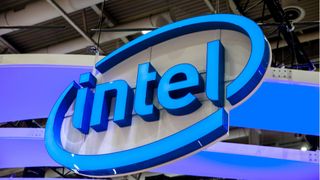
When Intel launches its very first gaming graphics cards next year, it’ll have to do one thing particular to tackle Nvidia’s Ampere and AMD’s RDNA 2 next-gen GPUs – and a brand new rumor means that the corporate will accomplish that by enlisting the assistance of TSMC to construct its Intel Xe-HPG GPU utilizing the 6nm course of node.
We’re getting a clearer image of Intel’s GPU plans, and whereas the Intel Xe-LP and Intel Xe-HP GPUs appear like they are going to be fabricated on Intel’s 10nm SuperFin node, with the Xe-HPG, Intel appears to be getting some exterior assist to get it on a a lot smaller 6nm course of node.
In keeping with IThome, Intel’s Xe-HPG GPU will likely be produced utilizing TSMC’s (Taiwan Semiconductor Manufacturing Firm) 6nm course of node – a innovative lithography know-how that can provide 18% more logic density in comparison with TSMC’s 7nm course of.
Getting forward
Utilizing the 6nm course of may give Intel’s Xe-HPG GPU a leg up with regards to competing with established rivals Nvidia and AMD. Nvidia’s upcoming Ampere lineup of GPUs will likely be constructed on TSMC’s 7nm FinFET course of, whereas AMD’s RDNA 2 microarchitecture will use TSMC’s ‘Enhanced’ 7nm course of.
Having smaller transistors with the 6nm course of, means Intel could make extra power-efficient graphics cards that may carry out higher with out producing an excessive amount of warmth. The denser the chips, the higher-performing they may very well be as properly – and it may additionally imply it’s cheaper for Intel to supply numerous them – and sooner as properly.
This might assist Intel to produce extra GPUs – which would definitely be helpful seeing as the corporate is a newcomer to discrete gaming graphics cards compared to AMD and Nvidia.
You could have observed that TSMC seems to be the massive winner in all of this, and because the world’s largest semiconductor foundry, it additionally works with firms similar to Apple and Qualcomm.
It subsequently wouldn’t be stunning if Intel enlisted TSMC’s assist – particularly since Intel lately revealed it was having to delay its 7nm processors till late 2022 on the earliest. When it made that announcement, it revealed plans to work with third-celebration foundries to fabricate its chips – so it appears probably it could do the identical for its GPUs as properly.